Wildlife tracking technologies have already massively advanced our understanding of the natural world, from uncovering previously mysterious migration patterns and key movement corridors to demonstrating the impacts of anthropogenic pressures and climate change. Recent advances in the development of technologies for collecting and transmitting biologging data have unlocked the potential for fine-scale data collection at a near-global scale, which when integrated with remotely sensed environmental data offers an unprecedented biological lens into ecosystem health and environmental change (Jetz et al. 2022).
New technologies on the horizon include small satellites like CubeSats, which are being investigated by NASA, the ICARUS Initiative's satellite system, and a variety of other ventures aiming to improve the coverage, accuracy, and capacity of wildlife tracking data collection. Combined with the increased availability of high-resolution environmental data and analytical developments in movement modeling, these advancements are empowering movement ecologists to ask previously unanswerable or unimaginable questions. It’s clear that this discipline sits at the precipice of major breakthroughs that could revolutionize our understanding of animal movement and the natural world.
In this article, you will get a glimpse of how Arribada Initiative recognizes the advantages of incorporating SnapperGPS receivers into existing tag designs to acquire fast GPS fixes within the marine environment....
15 October 2021
In Alina Peter's and Kristen Snyder's contribution to the Technical Difficulties Editorial Series, you'll receive a practical checklist of factors and questions to consider at various stages of your conservation...
13 October 2021
In her article for the Technical Failures Editorial Series, WILDLABS' Ellie Warren discusses how the loss of one tagged sea turtle represents the wider challenges faced by conservation efforts, and how the collaborative...
8 October 2021
The International Journal of Computer Vision is calling for papers on Computer Vision Approach for Animal Tracking and Modeling. Visit the Springer website for further details and submission guidelines.
20 September 2021
Internet of Elephants is excited to introduce a free data visualisation tool to help researchers and conservation storytellers show animal movement data easily and effectively! Read about the new tool below, and try it...
18 August 2021
In this article, WWF's Whitney Kent discusses how radio collaring carnivores like lions and African wild dogs helps prevent human-wildlife conflict by acting as warning devices for communities and monitoring species'...
28 April 2021
In this interview with Dr. Corinne Kendall of the North Carolina Zoo, Dr. Kendall shares how telemetry studies can help prevent vulture poisoning in East Africa, the conservation technology she uses in her work, and...
18 March 2021
National Geographic is offering funding up to up to $50,000 for conservationists conducting research on how the pandemic has impacted wildlife and conservation work. If you are interested in researching aspects of the...
10 March 2021
As we launch our new Sustainable Fishing Challenges group in the WILDLABS community, we are excited to welcome Daniel Steadman, the group manager, to give us an overview of three major areas in which #tech4wildlife...
4 December 2020
Introducing Movebank's Arctic Animal Movement Archive (AAMA), a collection of studies containing animal movement and other animal-borne sensor data from the Arctic and Subarctic. Through this collection of 214 studies ...
17 November 2020
Do you have innovative #tech4wildlife ideas that could save one of the most endangered species on earth from extinction? Apply now to join Vaquita Hack, a hackathon for students and early career conservationists! This...
10 November 2020
We've got exciting news from the Icarus project, a satellite-based animal monitoring system: following a successful test phase this year, the first cross-continental scientific pilot project is set to begin this...
15 September 2020
June 2024
event
October 2022
event
September 2022
TinyTx wildlife Audio Surveillance
27 August 2021 7:16am
New Resource: Data Visualisation Tool for Animal Movement Data
 Internet of Elephants
Internet of Elephants
18 August 2021 12:00am
Proximity detection in koalas
12 August 2021 8:01am
R package for triangulation?
29 June 2021 2:38am
Creating a global database for drift data from pop-up satellite tags
28 April 2021 2:16pm
4 June 2021 12:14pm
You could use Movebank for this, stream the data into a study, manage sharing settings to make some public and keep others private if needed. Lots of non-bird data in there!
Cheers
Roland
4 June 2021 6:40pm
You might also check out the Ocean Data Platform team at https://www.oceandata.earth/ They're trying to be a one-stop shop for ocean data and have recently ingested all the IOC data. EMODNet has an ingestion portal and data ambassadors who can negotiate data sharing agreements and anonymization/aggregation. Also @ThomasGray_Argos data sharing agreements and data governance is something I work on and would be interested in talking more about the privacy/user data issues you mention. I;ve been thinking about the need for a data intermediary that can hold data safely, scrub PII, and then share it with open platforms so each sensor owner or small entitty doesn't have to negotiate their own data sharing licenses.
4 June 2021 7:15pm
@skatewing Shoot me an email, and we can discuss ([email protected]).
Otter survival monitoring
2 June 2021 7:05pm
WWF: Carnivore Collaring in Zambia
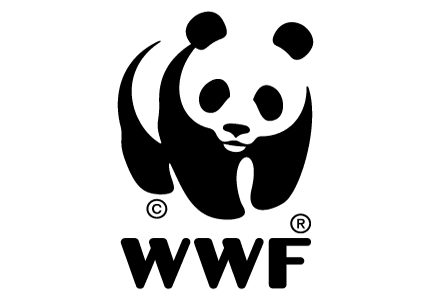 World Wildlife Fund
World Wildlife Fund
28 April 2021 12:00am
Event: The 7th International Bio-Logging Symposium
 International Bio-logging Society
International Bio-logging Society
12 April 2021 12:00am
Machine learning for animal tracking Kaggle competition?
17 February 2021 10:32am
28 February 2021 7:16am
Hi,
I have plenty of data which is not (yet) available to everyone. If still relevant, please contact me for more details.
26 March 2021 4:37pm
What kind of data are you looking for? Like just lat/long coordinates, GPS points, .shp files, etc.? I have a small amount of GPS data from focal follows of lemurs (+ behavioral context/individual ID/subgroup, etc.) over a 3 month period. It's not published as I'm only using it in conjunction with a vocal dataset I'm working with. But I imagine you're probably after much larger datasets?
9 April 2021 7:33pm
There are lots of data in Movebank that are not publically availalbe, all the grey dots in the search map. You can contact each data owner and arrange for access to the data.
GPS tag modification
23 February 2021 9:56am
28 February 2021 9:49am
Hi Carl,
Thanks, I think I see what you mean. I would probably do as you have done, glue the tag onto a fibreglass plate, and screw that plate onto a scale. For glue, silicone caulking or epoxy putty can be used, my preference would be caulking because it's easier to extricate the tag from it when the time comes.
As for the mounting plate, my preference is fibreglass of the sort used in electronics, as this can be glued to. For making the screw holes, if you have trouble with them splintering, I've heard that you can melt a clean hole using a heated iron nail, instead of drilling.
Thanks,
-harold
13 March 2021 6:42am
Hi Carl,
Is there any reason you cannot screw the GPS unit directly to a scale through the three existing holes? You could use a quick setting glue between the scale and GPS, not for strength but to ensure there is nothing that can get between the scale and GPS to bust it off. Maybe quick set epoxy but even just gap filler might do the job.
I just realised how old this thread is so maybe you have already solved the issue.
Matthew
20 March 2021 11:02am
Hi Matthew-- thanks. Very good suggestions. I am already going w the option of having the metal plate underneath. The tags cost a lot and I would rather go w the option that I am sure would ensure I can retrieve them.
Interview: Protecting Vultures with Telemetry
 Dr. Corinne Kendall
Dr. Corinne Kendall
18 March 2021 12:00am
Heat shrinking "stuff" to collars
25 February 2021 10:07am
13 March 2021 7:16am
Hi Lars,
I'm currently heat shrinking transmitters to make a simple pouch to hold a transmitter to an ear tag. Because I want to prevent damage to the ear as much as possible, I figured it was desirable to have a material that would break before the ear does but I have not put this to the test. Two units deployed so far without an issue except for an intermittent fault with one of the transmitters. Hopefully not caused by the heatshrink. I think the biggest issue with heat-shrinking to a collar is that the heatshrink goes hard (at least the stuff I used) and will pull the collar toward the shape of the hard object you are attaching. A bit of preplanning and adding the desired shape before applying the heat should resolve that.

Funding Opportunity: COVID-19 Science Fund
 National Geographic
National Geographic
10 March 2021 12:00am
Getting VHF transmitters in a quick turnaround time
26 February 2021 1:14pm
26 February 2021 2:45pm
Hi Kas,
Advanced Telemetry Systems has been able to get me transmitters in less than 4 weeks a few times. It does depend on how busy they are, though, so not guaranteed.
Good luck,
Kyler
1 March 2021 1:23pm
Hi Kyler,
That's great! Thank you for the lead - I'll get in touch with them asap.
Cheers, and all the best,
Kas
What to consider when planning our project for endangered, rarely seen species
5 February 2021 10:52am
26 February 2021 3:36pm
https://zslpublications.onlinelibrary.wiley.com/doi/full/10.1002/rse2.191
This paper may be of interest!
And the latest Oryx edition is all camera-trap papers - https://www.cambridge.org/core/journals/oryx/issue/4E2CEA9634F17EEBB58E5A871ABB21CA
Gunshot detector on elephant tracking collars
28 June 2017 4:36pm
25 February 2021 10:02am
Interesting!
The µMoth initiative also seems very promising. They seem to be employed on dogs now as preparation for use on wild dogs in the Carnivore Bytes project.
Animal location and activity tracking devices – could these be useful for conservation studies?
30 May 2018 4:50pm
31 May 2018 6:37pm
Hi!
I am in the process of creating remote tracking devices to study activity and social behavior in lemurs. I would be happy to chat and learn more about your study system / try to offer any insight about tracking devices.
-Meredith
25 February 2021 9:57am
LoRa based cattle tracking tags made by Moovement are used for bison in the US by Hila Shamon.
Their biggest limitation as I see it is that they need continous connection to the LoRa stations as they do not log locations.
Tech Tutors: How do I choose the right tech for my bird monitoring project?
18 January 2021 3:56pm
Internship opportunities for PhD students
12 January 2021 4:12pm
15 January 2021 3:01pm
Hi Dennis,
I actually work in the graduate career center at my university (my fellowship is doing that rather than teaching) and this is what we specialize in! I too am a PhD student moving out of academia after the PhD. Many of our office's online resources are applicable to any PhD student, not just those at the CUNY (City University of New York) Graduate Center. Check it out: cuny.is/careerplan. I'm also happy to chat or answer any questions. The Wildlabs 'Resources' page is a great place to look for internship opportunities! I would also highly recommend getting a Twitter if you don't already have one, and utilizing that. There are a bunch of hashtags (#PhDchat, #altac, etc.) that may be helpful to watch for, and then you can also follow org's so you can see when they post opportunities.
Hope this helps!
All the best,
Carly
Workshop: Analyses of acoustic telemetry data with R
 European Tracking Network
European Tracking Network
15 January 2021 12:00am
How do I choose the right tech for my bird monitoring project?
11 January 2021 12:00am
Has anyone used CVEDIA'S ARTEMIS before?
5 January 2021 5:45pm
Sustainable Fishing Challenges: Fish Catch Monitoring
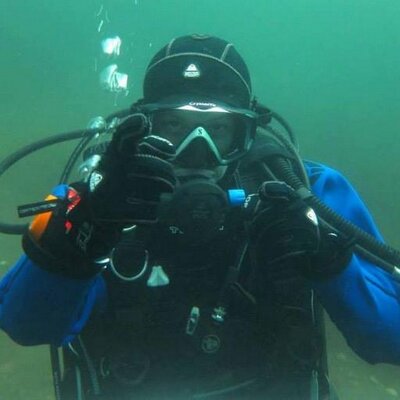 Daniel Steadman
Daniel Steadman
4 December 2020 12:00am
Event: Wildlife Drones at ESA20
 Wildlife Drones
Wildlife Drones
30 November 2020 12:00am
Making the Most of Tech Tutors Season 2!
30 November 2020 12:00am
Introducing the Arctic Animal Movement Archive
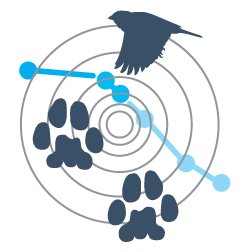 Movebank
Movebank
17 November 2020 12:00am
Weekly Event: OTN Virtual Study Hall
 Ocean Tracking Network
Ocean Tracking Network
16 November 2020 12:00am
California Condor Conservation - Tech & Resources
18 May 2020 6:44pm
4 September 2020 1:07am
Hi Akiba,
Oh that is amazing, thank you! I'll get in touch with them and let them know! A few of them are members here on WILDLABS already, so I'll see if they've got a wishlist to post for anyone who might like to help out.
12 November 2020 5:55pm
Hi all,
Just wanted to share some info about VWS's virtual chat series, if you're interesting in hearing the latest condor news about wildfire recovery efforts, how the fires impacted their camera systems, tracking, etc., and about the condor chicks who were rescued from the fires.
The next chat is on November 19th at 4 PM PST, and you can register here. They also have an archive of past recorded chats, including a very cool #tech4wildlife one on condor photography!
-Ellie
12 November 2020 7:18pm
Thanks Ellie - I signed up : )
Hackathon Opportunity: Vaquita Hacks
 The Conservation Project International
The Conservation Project International
10 November 2020 12:00am
Drop off pods on collars
7 September 2020 1:41pm
29 September 2020 11:03pm
Thanks for the details Thomas. I am fairly happy with the nichrome release mechanism we use, but it's always good to have alternatives, and the explosive approach could be much more useful for others. Appreciate all the information.
Cheers,
Rob
30 September 2020 8:02pm
Yup - my pleasure.
1 October 2020 6:44pm
Thanks Thomas. The option of desertstar seems strong, and it needs to be strong for the animals I work with (large carnivores). Indeed the pod would need to be designed to fit the collar type, but that's not impossible.



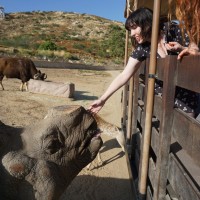









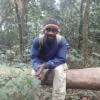



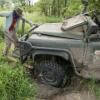
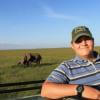





16 July 2021 3:31pm
This paper mentions some, and is just a great review on localization more broadly! I'd look into gibbonR and warbleR
Acoustic localization of terrestrial wildlife: Current practices and future opportunities (https://onlinelibrary.wiley.com/doi/full/10.1002/ece3.6216).
This paper used Sound Finder -- Validation of an Acoustic Location System to Monitor Bornean Orangutan (Pongo pygmaeus wurmbii) Long Calls (https://doi.org/10.1002/ajp.22398)
And this one used a MATLAB script -- Tracking cryptic animals using acoustic multilateration: A system for long-range wolf detection (https://doi.org/10.1121/1.5092973)